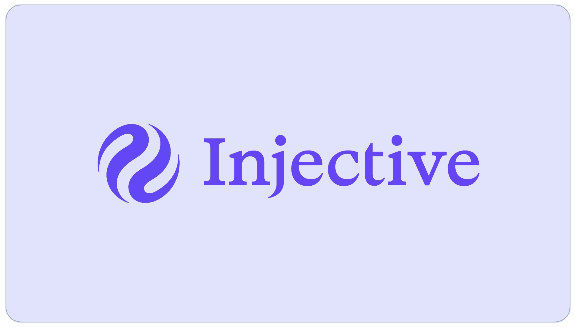
Injective native EVM mainnet has launched. From the approval of the mainnet upgrade proposal on November 8 to the official launch of the public network on November 11, followed by the intensive deployment of over 40 dApps and infrastructure in the following days, this series of actions is not just an 'upgrade,' but more like a 'gene recombination' of on-chain capabilities.
While most blockchains are still struggling with virtual machine compatibility and fragmented liquidity, Injective has quietly turned the page to a new chapter. With the launch of the native EVM mainnet, this blockchain specifically designed for finance has officially entered the 'MultiVM' era — a new epoch where any development language and any virtual machine environment can share a unified asset layer.
Performance: When trading feels as natural as checking out at a supermarket
In the blockchain world, 'high performance' is often an overused label, but Injective chooses to let the data speak. 0.64 seconds block time, nearly 20,000 TPS, and a single transaction gas fee as low as $0.00008 — these numbers correspond to almost imperceptible transaction delays and costs for users.
For example: when you are in line to check out at a supermarket, you won't worry about 'whether this transaction will succeed' or 'whether the fees will be too high', and Injective is bringing this experience on-chain. This performance is not achieved at the expense of decentralization or security, but through native modules such as gas compression mechanisms and on-chain order books. It is worth mentioning that the Injective mainnet has been operating stably for three years, processing over 1 billion transactions, with over 57 million INJ staked on-chain, and a total of 6 million INJ burned — this deflationary mechanism further reinforces the scarcity of its token economic model.
Accessibility: Any language, any VM, one unified entry point
If performance is the foundation, then 'accessibility' is the key for Injective to break down barriers in on-chain finance.
Traditional blockchain ecosystems often require developers to make 'multiple-choice questions' between different virtual machines (such as EVM, SVM, Wasm), leading to dApps and assets forming isolated islands. However, Injective's MultiVM architecture allows developers to write smart contracts in Solidity, Rust, or any language they are familiar with, and share the same set of asset standards — MultiVM Token Standard.
This means:
- Users no longer need to bridge assets; whether the dApp is built on EVM or Wasm, the token functions are completely consistent;
- Developers can directly call Injective's native financial modules (such as on-chain order books, RWA asset tokenization tools), significantly shortening development cycles;
- Institutions can quickly deploy complex financial products, such as RWA, ETFs, or AI-driven on-chain strategies, without needing to build underlying infrastructure from scratch.
This 'plug-and-play' modular design not only lowers the development threshold but also makes Injective the 'shortest path' for institutions to enter on-chain finance.
Liquidity: The ultimate battle of cold start problems
For any emerging chain or dApp, 'cold start' has always been a major challenge — without initial liquidity, no matter how good the product is, it is difficult to survive. Injective is fundamentally solving this issue through a unified liquidity layer and cross-VM atomic trading.
For example: when diversified assets such as Helix, BlackRock tokenized funds, and even SpaceX Pre-IPO assets trade in the same on-chain market, liquidity will naturally converge. More importantly, Injective's native integrations (such as LayerZero, MetaMask, Chainlink) allow cross-chain assets to flow seamlessly, further amplifying network effects.
Data shows that the Injective ecosystem has processed a cumulative trading volume of $54 billion, with the number of active addresses ranking second across the chain in net inflow in May 2025, and developer activity increasing by 319% within two months. This growth is not coincidental, but a result of positive feedback from liquidity, composability, and user scale.
Ecosystem landing: A chain reaction from vision to reality
The value of technological upgrades ultimately needs to be validated through ecosystem applications. On Injective, we have already seen a series of landmark advancements:
- The launch of Helix Mobile makes decentralized order book trading feasible anytime and anywhere;
- The Injective Yield Fund reinvests on-chain revenue, further strengthening the deflationary nature of INJ;
- Collaborations with institutions such as 21Shares and Hamilton Lane enable traditional financial products like RWA and ETFs to be natively issued on-chain;
- Activities such as Binance CreatorPad provide the resources and exposure needed for early projects to achieve a cold start.
It is worth mentioning that the Injective team has shown strong execution and long-termism in promoting ecosystem development. Since its establishment in 2018, the team has come from traditional finance and tech companies such as Goldman Sachs, Amazon, and Two Sigma, and has always focused on building a 'blockchain born for finance', rather than chasing short-term market trends.
Future value: Why Injective is worth paying attention to
From an investment perspective, Injective has demonstrated several key advantages:
1. Fully circulating token model: INJ has been fully unlocked and continues to deflate through a weekly burn mechanism, contrasting sharply with many high FDV, low circulation projects;
2. Revenue and valuation potential: Injective is already one of the highest income-generating L1 protocols, with its revenue/FDV ratio ranking among the industry's best;
3. Institutional adoption pathway: With the deep integration of RWA, AI, and on-chain financial modules, Injective is expected to become the preferred infrastructure for trillion-dollar traditional assets on-chain.
The essence of the MultiVM era is not a simple overlay of technologies, but a paradigm shift in on-chain financial infrastructure, breaking the fragmentation deadlock of on-chain finance through a 'unified asset layer'. Injective is building a global financial system that anyone, any institution can seamlessly participate in, with a 'trio' of performance, accessibility, and liquidity. With the ongoing landing of ecosystem partners and accelerated inflow of institutional funds, this financial public chain honed by @ericinjective and the @injective team for six years may be on the brink of an explosion.
 #MultiVM #Injective@Injective
#MultiVM #Injective@Injective



